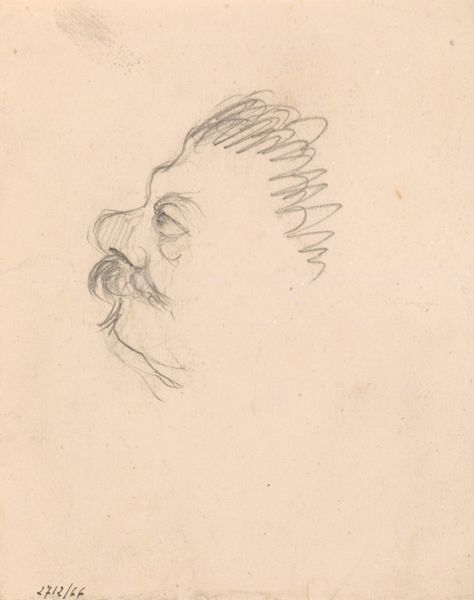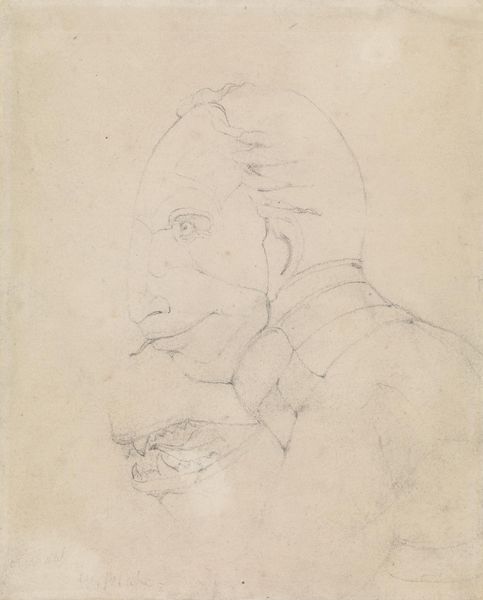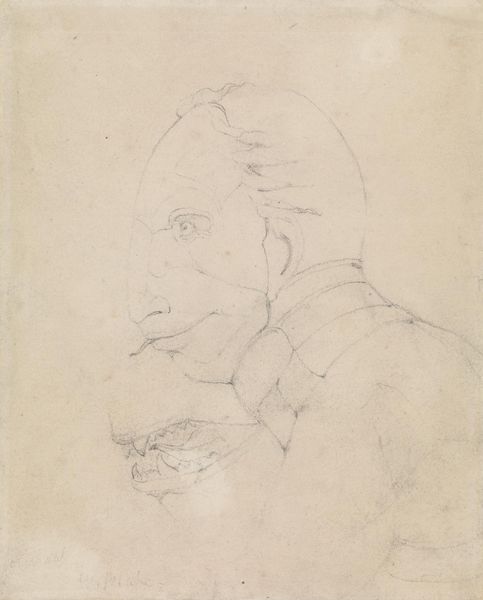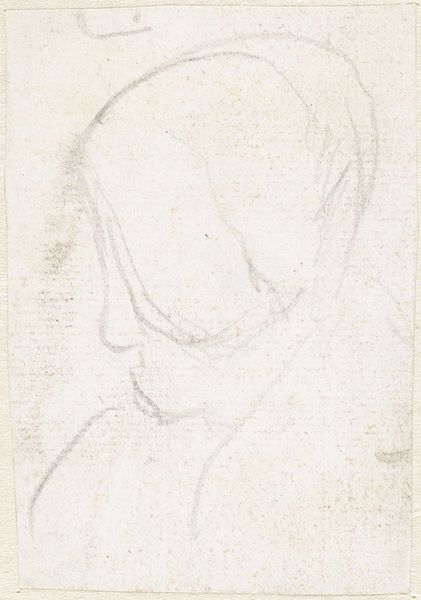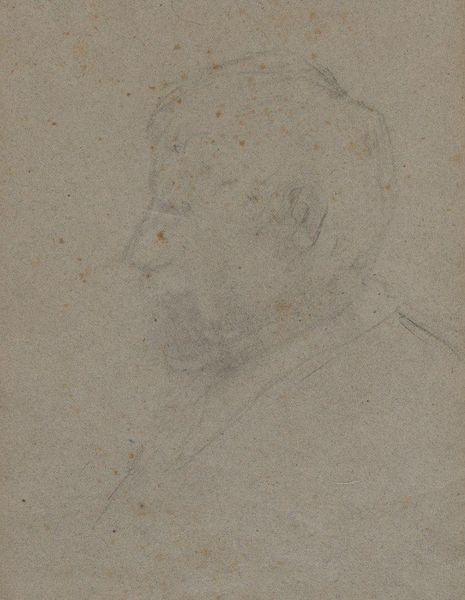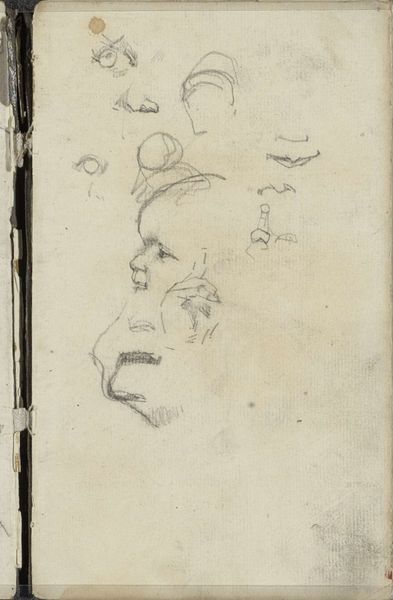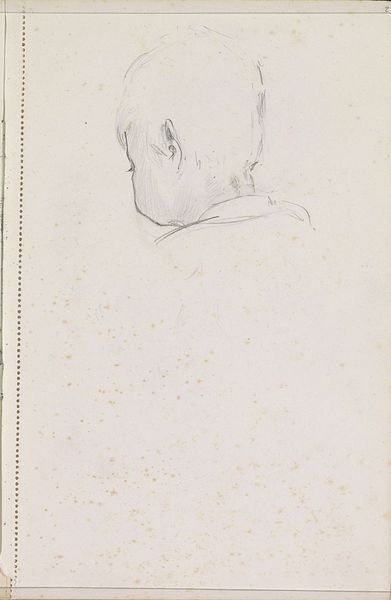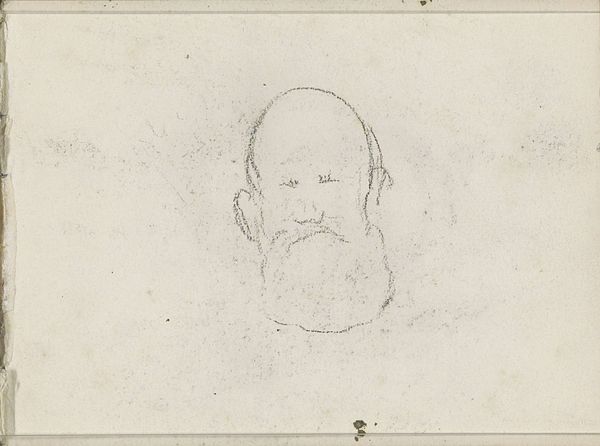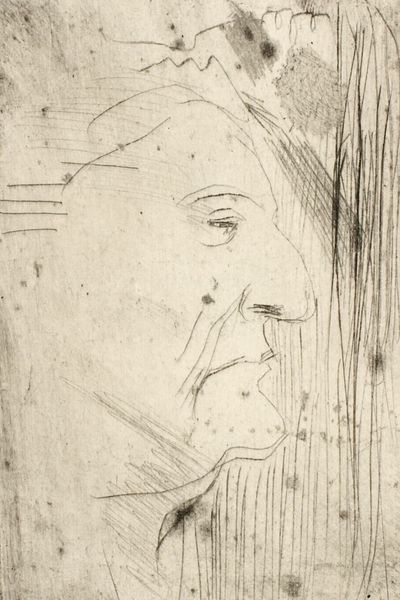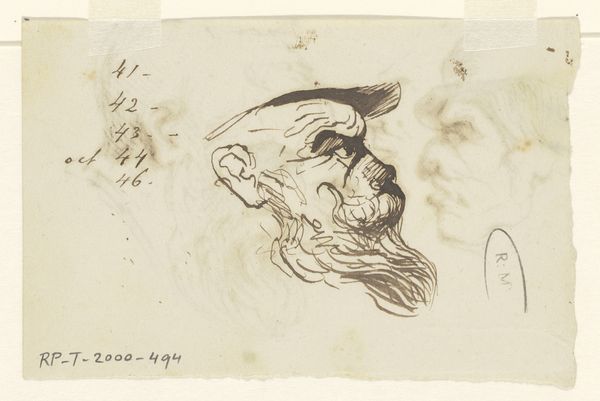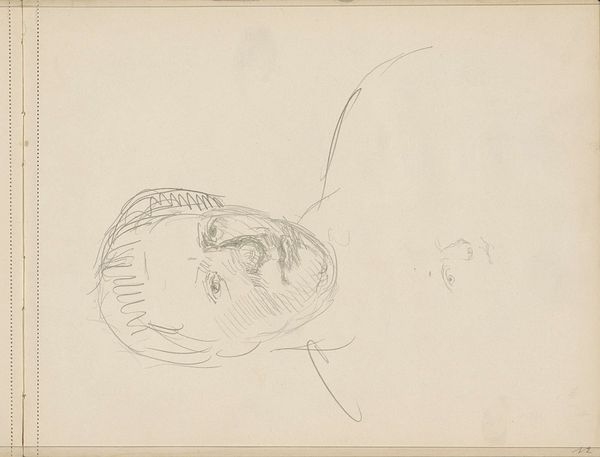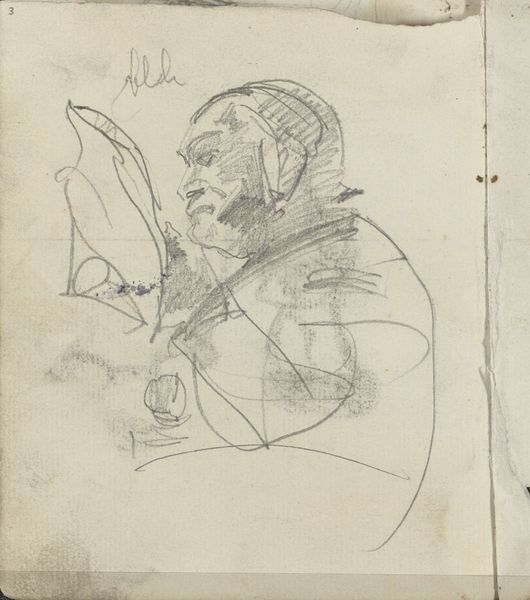
drawing, pencil
#
portrait
#
drawing
#
pencil
#
academic-art
#
realism
Copyright: Public Domain: Artvee
Editor: Here we have "Study of a Male Head" created between 1880 and 1885 by Santiago Rusiñol. It's a pencil drawing, fairly minimal. I am struck by how fleeting the image feels, like the artist was capturing a quickly-passing moment. What do you see in this piece? Curator: For me, this drawing speaks volumes about the artistic training prevalent during that era, deeply entrenched within the academic-art tradition. We must consider the socio-political undercurrents that supported this type of practice. Artists like Rusiñol, particularly in their formative years, were rigorously trained in representational accuracy, emphasizing anatomical correctness and adherence to classical ideals. This piece reflects that rigorous education. Notice how Rusiñol uses pencil to capture light and shadow. How do you think that might be interpreted through a cultural lens? Editor: I guess that level of realism was valued by patrons and academies at the time? So, mastering it would open doors for artists? Curator: Precisely! This wasn't simply about skill; it was about access. Patronage systems and official art institutions largely dictated what was considered 'good' art. Creating pieces in this academic style, demonstrates artistic skill but it also serves as a form of social currency for Rusiñol. Do you think artists working outside of those sanctioned styles would find that this system was working for them as well? Editor: Probably not. This gives me a much better sense of the challenges that artists faced and why so many conformed, at least initially, to academic standards. It wasn't just about creating art, but also about navigating a complex social and political landscape. Curator: Exactly. And understanding that interplay enriches our interpretation and informs our present-day thinking about what is promoted by our culture. So much to reflect on!
Comments
No comments
Be the first to comment and join the conversation on the ultimate creative platform.
